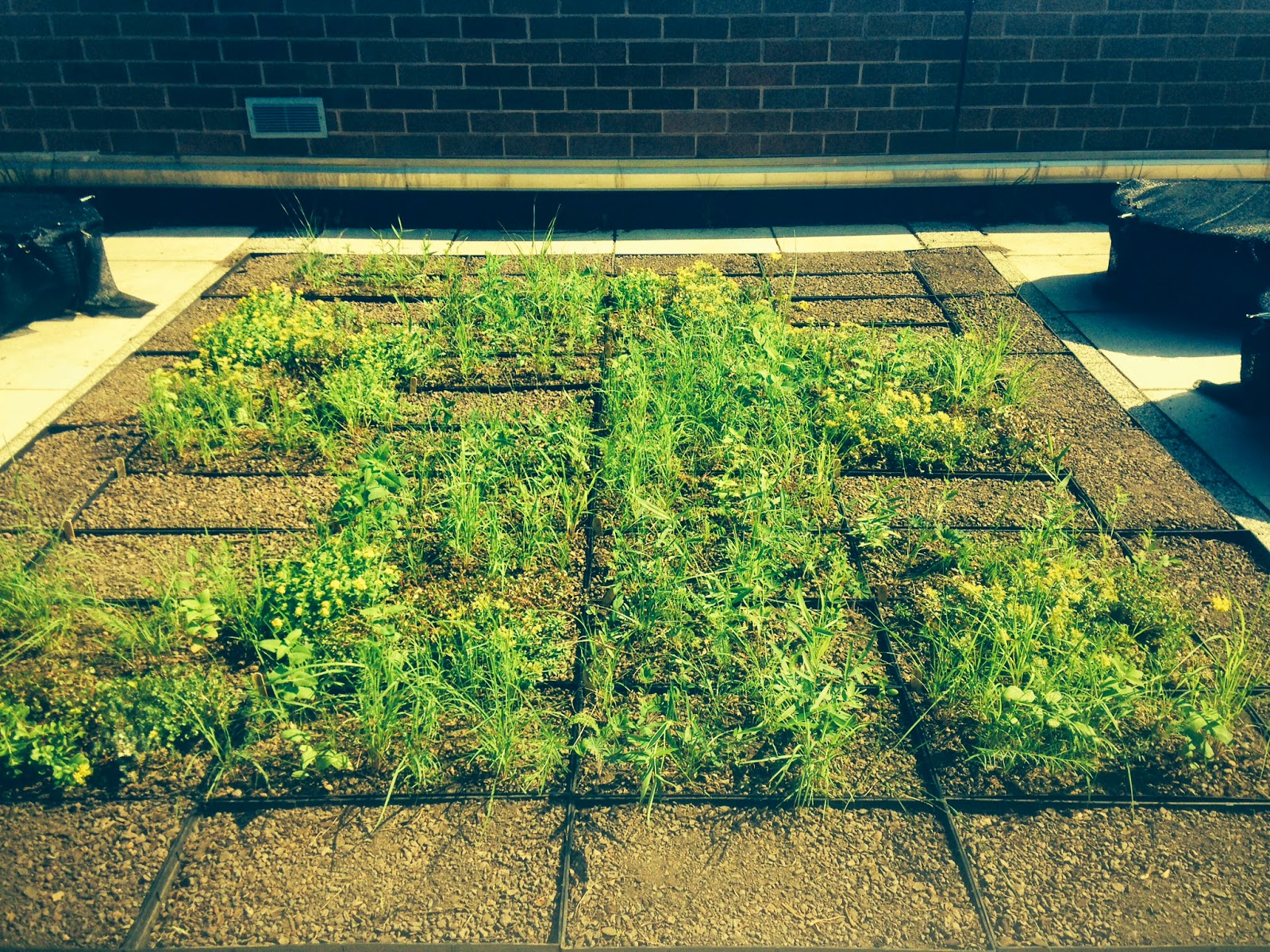I've begun taking water-holding capacity tests for all of our experimental trays! The process took some thinking to develop, but once we nailed it down, it was pretty easy going.
 |
| Measuring water-holding capacity |
The procedure is:
I. Drying
Soil
1. Heat up soil drying oven to 105ºC for an
hour
2. Take bag of soil out of freezer and let
thaw
3. Sample 45 ml of soil and place in
aluminum weight boat
4. Place remaining soil in bag back in
freezer
5. Place the aluminum weigh boat with soil
in drying oven
6. Dry for at least 48 hours
7. Remove weigh boat and place in desiccator
if not used immediately
II. Measuring
Water-holding Capacity
1. Measure and record 40 ml of dried soil
alone in a tared weigh boat
2. Wet a folded filter paper by submerging
entirely in a water bath
3. Let the wet filter paper drain for one
minute until it is no longer dripping
4. Weigh and record the wet filter paper
alone in a tared weigh boat
5. Add the soil to the wet filter paper
6. Add 50 ml of water slowly and all over to
the soil
7. Repeat step 6 two times
8. Wait three minutes for the water to drain
until it is no longer dripping
9. Weigh and record wet soil in the wet
filter paper in a tared weigh boat
10. Measure and record volume of water that filtered
through
I've already gotten through the first 10 trays which are all Prairie A native plants. The first five are with added native inoculum, the next five are added with sterilized inoculum. The average water holding capacity of the added native inoculated soils was higher than the average of the sterilized inoculated soils for Prairie A! This is great news because for the Prairie A, the addition of native inoculum improved storm water retention!
More results to come later!

















.jpeg)
.jpeg)
.jpeg)

.jpeg)
.jpeg)
.jpeg)
.jpeg)
.jpeg)
.jpeg)
.jpeg)

.jpeg)
.jpeg)

















